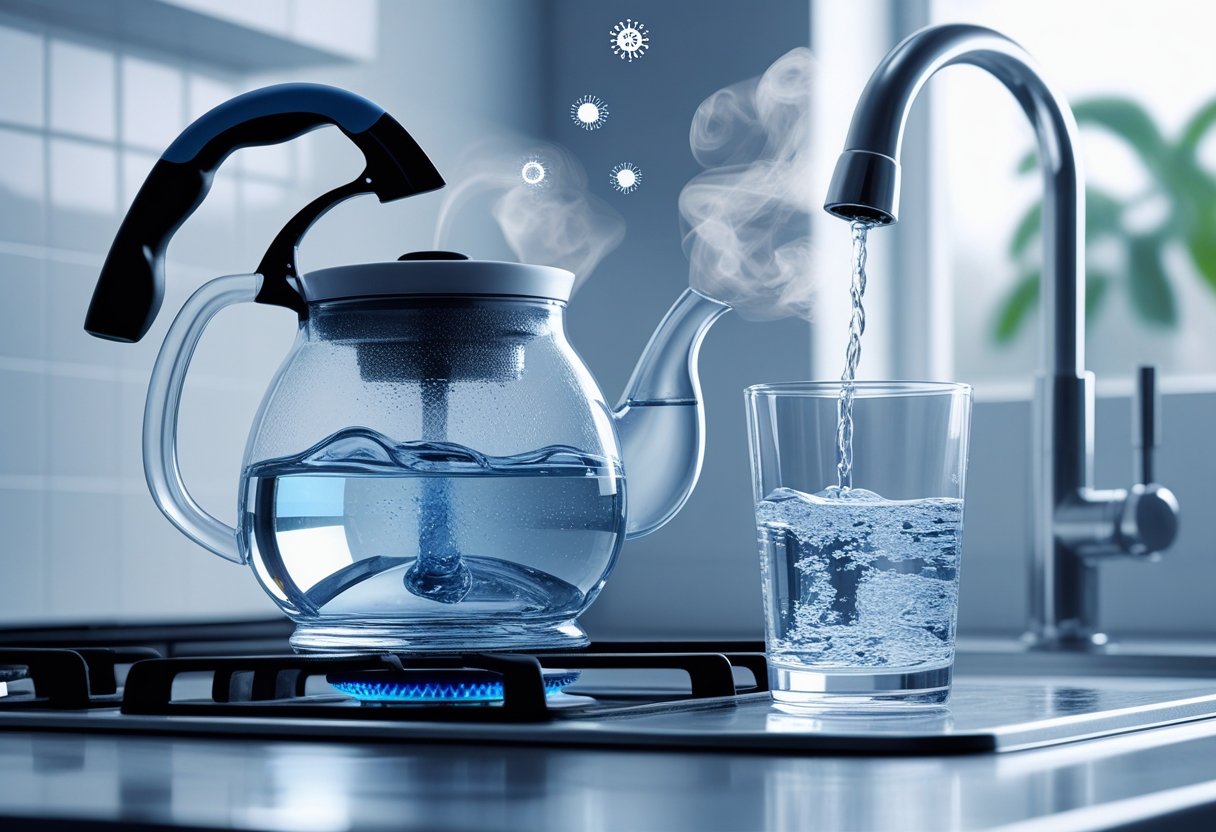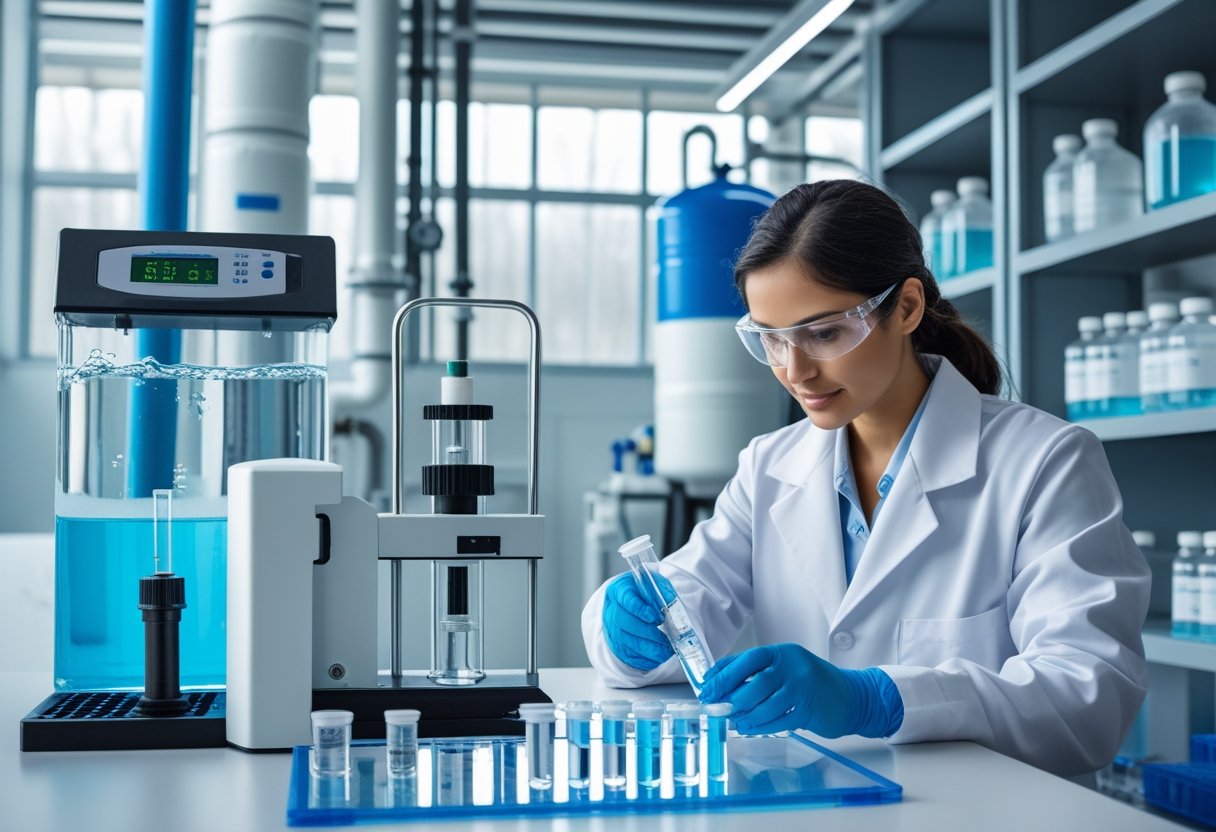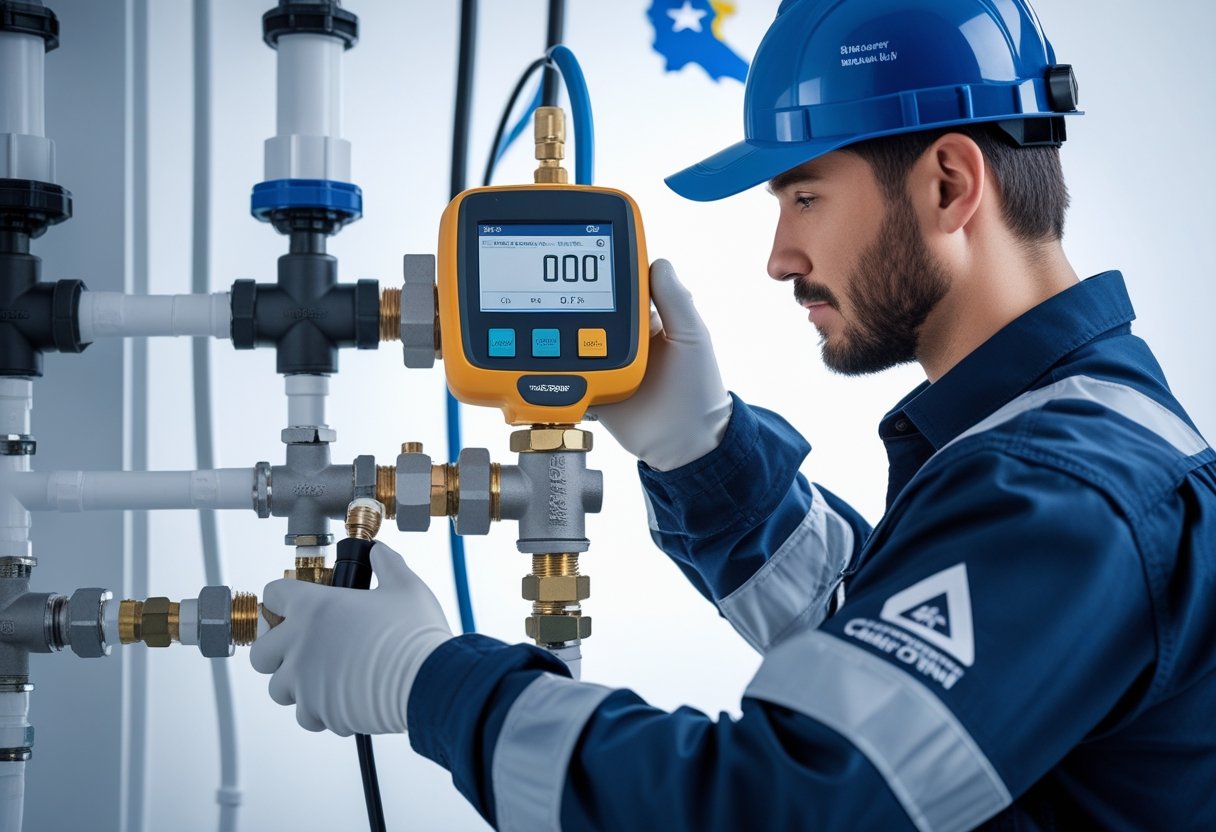Boiling tap water is a common practice many people use to ensure its safety for drinking. While boiling effectively kills bacteria and viruses, it does not eliminate chemical contaminants and inorganic substances. Understanding the limitations of this method can help you make informed decisions about your water consumption.
In areas where water quality is a concern, it’s essential to know if boiling is enough to purify your tap water. As you navigate questions about water safety, consider how boiling fits into the larger picture of purification methods. If your water system is impacted by backflow issues, companies like Pacific Backflow offer vital services to maintain proper water safety standards.
You may find that while boiling is a straightforward solution to some water quality problems, relying solely on it might not be sufficient. Explore the science and facts surrounding water purification to ensure your drinking water is truly safe.
Does Boiling Tap Water Purify It?
Boiling tap water is a common method of purification, but its effectiveness varies depending on the contaminants present. Understanding how boiling works and what it removes can help you make informed decisions about your water safety.
How Boiling Water Works
Boiling water involves heating it to a temperature where harmful microorganisms are killed. At 212 degrees Fahrenheit, most bacteria, viruses, and protozoa lose their viability. This high temperature is effective against pathogens such as E. coli, Giardia, and Salmonella.
However, boiling does not function like a filter. It primarily targets living organisms, which makes it a good choice for purifying water from natural sources. You should still consider additional purification methods for chemical contaminants.
Types of Contaminants in Tap Water
Tap water can contain a variety of contaminants, including harmful bacteria and viruses. Common pathogens include:
- E. coli: Often found in feces, this bacterium can cause severe gastrointestinal issues.
- Giardia: A protozoan that can lead to infections if ingested.
- Salmonella: This bacterium can be responsible for serious foodborne illnesses.
- Cryptosporidium: A parasite resistant to chlorine, making it a concern in contaminated water.
In addition to biological contaminants, tap water may also have chemical pollutants like chlorine, lead, and fluoride. Boiling does not effectively remove these substances, highlighting the importance of a comprehensive approach to water purification.
What Boiling Water Removes and What It Does Not
Boiling water is effective at killing many harmful microorganisms but does not eliminate chemical contaminants. Here’s a simple breakdown:
Removes:
- Harmful bacteria (e.g., E. coli, Salmonella)
- Protozoa (e.g., Giardia, Cryptosporidium)
- Viruses (e.g., Hepatitis A)
Does Not Remove:
- Chemicals (e.g., chlorine, lead, fluoride)
- Heavy metals
- Sediments or particulates
If your tap water is under a boil water advisory, boiling can make it safe to drink temporarily. However, for complete safety, consider additional purification methods. Pacific Backflow can assist in maintaining your water quality through reliable backflow testing and repair services in San Diego County.
Boiling Water Versus Other Water Purification Methods
When considering how to purify tap water, boiling is a common method, but it's essential to understand how it compares to other purification options. Each method has its strengths and weaknesses, influencing the quality and safety of your drinking water.
Comparison With Water Filters
Water filters are designed to address a broader range of contaminants than boiling alone. Boiling effectively kills bacteria and pathogens, but it does not remove chemicals or heavy metals. In contrast, high-quality water filters can eliminate chlorine, lead, and various sediments.
Filters come in different types, including activated carbon and ceramic systems. Activated carbon filters are popular for improving taste and odor, while ceramic filters physically block particles. Investing in a reliable filter can provide continuous access to safe, clean water, unlike boiling, which requires time and energy for each use.
Reverse Osmosis and Distillation
Reverse osmosis (RO) is a powerful purification method that forces water through a semipermeable membrane, effectively removing around 95-99% of contaminants, including salts, heavy metals, and viruses. This method addresses many issues that boiling cannot, making it an excellent choice for high-quality water.
Distillation involves heating water to create steam, then condensing that steam back into liquid. This process removes a wide range of impurities, including heavy metals and some chemicals. While both RO and distillation can be more costly and complex than boiling, they offer higher levels of purification.
UV Disinfection and Alternative Techniques
UV disinfection is another method worth considering. This technique uses ultraviolet light to disinfect water by inactivating bacteria and viruses, making it safe to drink. Unlike boiling, UV treatment does not alter the water's chemical composition and works quickly.
While alternative techniques, such as chemical disinfection using chlorine or iodine, can also be effective, they may leave residual tastes or odors. Each method should be assessed based on your specific water quality needs.
For reliable backflow prevention and protection of your water supply, consider working with Pacific Backflow. Their expertise in backflow testing and installation ensures your system meets safety standards in San Diego County.
Safety Considerations When Boiling Tap Water
Understanding how to safely boil tap water is crucial for health and water safety. This section will explore boil water advisory guidelines, safe boiling practices at home, and the risks of overconcentration of contaminants.
Boil Water Advisory Guidelines
When local authorities issue a boil water advisory, it indicates potential contamination in the water supply. You should bring water to a rolling boil for at least one minute to eliminate harmful microorganisms. In higher altitudes, extend boiling time to three minutes to ensure safety.
If you are unsure whether an advisory is in effect, check with local government or health department announcements. Following these guidelines during advisories is essential to avoid health risks associated with consuming untreated tap water.
Safe Boiling Practices at Home
To boil water safely at home, use clean utensils and containers—preferably stainless steel or heat-resistant glass. Fill a pot with water and place it on a heat source until you reach a rolling boil.
Once boiling, maintain that temperature for at least one minute. Allow the water to cool before use. Consider using a lid to speed up the boiling process and minimize evaporation.
If you find your water has an unusual taste or odor after boiling, this may indicate the presence of concentrated contaminants. In such cases, you might want to explore additional treatment methods for water safety.
Risks of Overconcentration of Contaminants
Boiling water effectively eliminates many bacteria and viruses, but it does not remove chemical contaminants like lead or chlorine. The boiling process may even exacerbate taste and odor issues by concentrating certain chemicals.
It's important to recognize that boiling is not a catch-all solution. If your water contains heavy metals or chemicals, relying solely on boiling could lead to health risks. To ensure comprehensive water safety, consider incorporating backflow prevention measures, such as those offered by Pacific Backflow, to protect your water supply and minimize potential hazards.
Maintaining awareness of these safety considerations helps ensure that your drinking water remains safe and clean.
Limitations of Boiling for Purification
Boiling water is a popular method for purification, yet it comes with significant limitations regarding chemical contaminants and impurities. Understanding these limitations is crucial for ensuring your water safety.
Persistence of Heavy Metals and Chemicals
Boiling is ineffective against heavy metals such as lead, mercury, and arsenic. These contaminants do not evaporate or degrade at boiling temperatures, meaning they remain in the water. Even prolonged boiling won't reduce their concentration, ultimately posing health risks. For households relying on tap water, it's essential to explore additional filtration methods to remove these substances. If you're uncertain about your water quality, consider contacting a professional for water testing and purification options.
Volatile Organic Compounds and Boiling
Volatile organic compounds (VOCs) found in tap water can also resist removal through boiling. These chemicals often originate from industrial processes and agricultural runoff. When boiling water, VOCs may actually concentrate as water evaporates, increasing their proportion in the remaining liquid. This can lead to unpleasant odors and potential health hazards. To effectively eliminate VOCs, activated carbon filters or advanced purification systems like those offered by Pacific Backflow may be necessary to ensure your drinking water is safe.
Effect of Boiling on Pesticides and Pharmaceuticals
Many pesticides and pharmaceuticals found in water sources are not effectively removed through boiling. While some bacteria and viruses are killed, many chemical compounds remain unaffected. Boiling does not break down these contaminants but can sometimes alter their state, making them harder to identify and quantify. If you suspect pesticide or pharmaceutical presence in your water supply, consider a multi-barrier approach for purification, which might include sediment filtration and chemical treatment methods. It's essential to ensure that your water purification practices adequately address these challenges.
Best Practices for Effective Water Purification
Effective water purification requires a balanced approach combining pre-filtration and the right methods. By following specific practices, you can significantly enhance the safety and quality of the water you consume.
Pre-Filtration Before Boiling
Using a water filter as a pre-treatment step can enhance the purification process. A quality filter removes sediment, chlorine, and some contaminants, making the boiling process more effective. By eliminating particulates, boiling water primarily focuses on killing pathogens like bacteria and viruses.
Choose filters certified by organizations like NSF or ANSI for pathogen removal. Additionally, using activated carbon filters can improve the taste of your water, helping you stay hydrated without the unpleasant flavors. After filtering, bring the water to a rolling boil for at least one minute (or three minutes at higher altitudes) to ensure maximum effectiveness against remaining microorganisms. This combined approach ensures that your water is safe and pleasant to drink.
Choosing the Right Purification Method
Selecting the appropriate purification method depends on the contaminants present in your water source. Boiling water is effective but does not address chemical pollutants, heavy metals, or sediments. For these issues, reverse osmosis systems can provide comprehensive purification, effectively removing a wide range of contaminants, including lead and fluoride.
Consider your specific needs when deciding on a method. If your primary concern is biological contamination, boiling may suffice. For a robust solution, consider investing in a reverse osmosis system or a high-quality water filter for everyday use. Always evaluate your water quality, and whenever possible, consult professionals like those at Pacific Backflow for guidance on the best purification strategies for your circumstances. Their expertise in backflow prevention is vital to ensuring a safe drinking water supply.
Frequently Asked Questions
Many people have questions regarding the safety and efficacy of drinking boiled tap water. Understanding the specific concerns about contaminants, health implications, and taste can help you make informed decisions about your drinking water.
What are the disadvantages of drinking boiled water?
One major disadvantage of drinking boiled water is that it does not eliminate all contaminants. Boiling can kill bacteria and pathogens, but it leaves behind chemical impurities, heavy metals, and minerals that may pose health risks. Additionally, prolonged boiling may alter the water's taste.
How safe is it to drink boiled tap water?
Drinking boiled tap water is generally safe if boiled correctly. Boiling water kills most harmful microorganisms, making it microbiologically safe. It is important to boil water for at least one minute, especially at higher altitudes, to ensure effectiveness.
Can boiling tap water reduce the presence of fluoride?
Boiling tap water does not effectively reduce fluoride levels. In fact, boiling may concentrate fluoride and other contaminants because water evaporates during the boiling process, leaving impurities behind. Alternative filtration methods are more effective for removing fluoride.
Does boiling water effectively remove chlorine?
Boiling water can remove some chlorine from tap water, but it may not eliminate all chlorine compounds. The effectiveness depends on boiling time and temperature. For complete removal, activated carbon filters are recommended over boiling.
Are minerals lost when tap water is boiled?
Boiling tap water does not significantly decrease mineral content. Most minerals, such as calcium and magnesium, remain in the water after boiling. However, some volatile substances may evaporate, slightly altering the mineral balance.
Do people boil tap water to improve its taste for drinking?
Many people boil tap water to improve its taste by reducing chlorine and other odors. While boiling can help with some taste issues, it does not remove all impurities. Using a water filter may provide a more effective solution for enhancing taste and quality.











